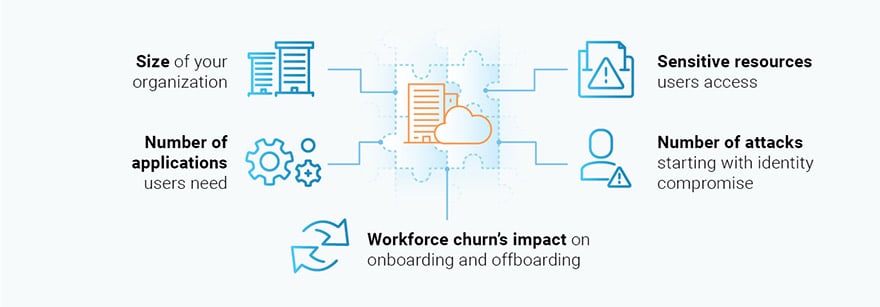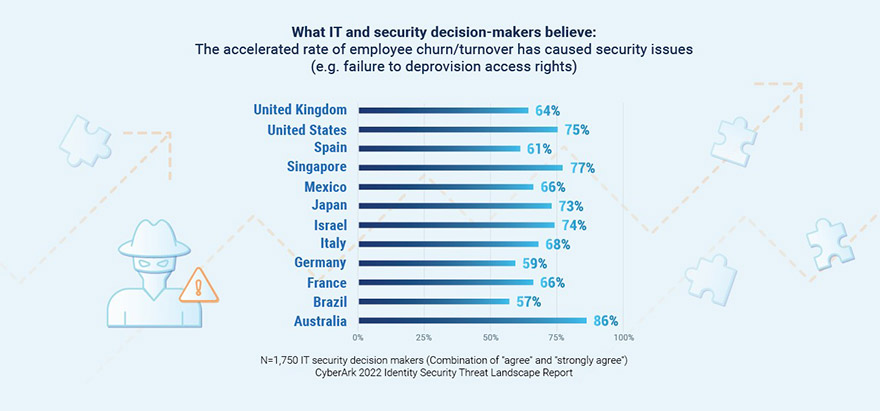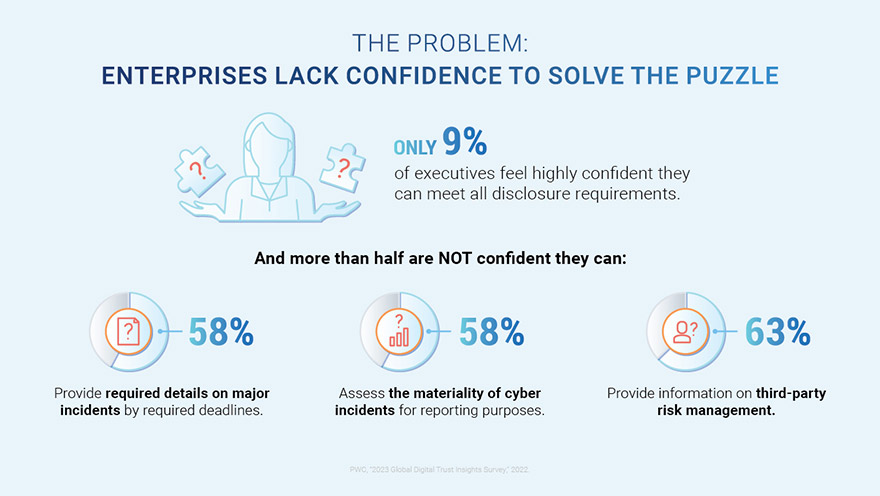
Have you ever received a puzzle as a gift from a well-intentioned friend? They likely thought something along the lines of, “Hey, this person’s into solving problems — I bet they’d love putting together this bad boy on a rainy day.”
The sentiment was spot-on. Puzzles are your thing. But then you see the words “7,000 PIECES!” on the box and think to yourself:
“How… When… In what reality will I be able to solve this puzzle?” Simultaneously, your phone blows up with work emails, your contractor says the furnace broke — and your kids/dogs/both have made a giant mess in the kitchen.
This scenario reflects what it must be like for an IT or security team member to take on the compliance puzzle, as identity management becomes more complex.
Ensuring and demonstrating compliance is a struggle for many organizations. In addition to defending against attacks, IT and security teams are often on point to manage one or more of the following areas:
- Ensuring transparency for internal and external audits
- Meeting requirements in complex industry and government regulations like PCI DSS, HIPAA and SWIFT
- Demonstrating compliance and producing comprehensive reports and/or analytics
As Identity Management Challenges Mount, the Stakes of Compliance Get Higher
The work involved in adhering to rules, meeting reporting requirements and avoiding penalties seemingly never stops growing. And there’s always *what’s coming next*…
So, what’s on the rise now? To start, regulations are expanding globally.

Also on the rise, the costs of getting compliance wrong.

Meanwhile, securing your users’ identities — which includes granting, certifying and revoking access — is essential. But it’s not easy. You’re protecting the enterprise at a time when everything is surging in concert and complexity.

As the Puzzle Pieces Shuffle, Malicious Actors Look for Vulnerabilities to Exploit
Attackers are fully aware of the challenges IT and security teams are facing. They’re on the lookout for the troublesome trio of unchecked access, orphaned accounts and privilege creep — all of which can happen if an organization lacks strong controls for managing access-related compliance reviews and certifications.

Consider the far-reaching effects of a breach stemming from a lack of consistent identity management processes. In this hypothetical scenario, let’s say an attacker exploited the account of a user who had accumulated too much access to sensitive resources. First and foremost, you’d need to deal with the impact of the breach itself — in this case, data theft involving customer information. But you’d also be facing ripple effects that could harm your enterprise’s operations.
No doubt, regulatory fines can be a huge impediment to your plans for growth and transformation. But how can an enterprise recoup from the impact of damaged trust — among its customers, partners, employees and any number of other key stakeholders?
Amid these pressures, it’s no wonder that most enterprise leaders admit that they lack the confidence to solve the compliance puzzle. It’s staring them in the face daily, not unlike the half-completed jigsaw puzzles that mock us from their arrogant perch atop so many coffee tables.

But solve the puzzle we must.
The million-to-gazillion dollar question: How do you gain the visibility and control you need to ensure that the evolving nature of privilege doesn’t put your organization in jeopardy? This applies to a wide range of identities and concerns, including:
- The potentially risky actions employees can take within applications containing sensitive data.
- The entitlements your privileged users have to access safes and privileged accounts.
- he authorizations and permissions your developers and operations teams have in cloud environments.
Six Identity Management Best Practices to Help You Solve the Compliance Puzzle
Here are some best practices for strengthening compliance and auditing capabilities:
- Create a unified view of who has privileges and authorization to what resources, with capabilities for discovering, adjusting, certifying and revoking access.
- Integrate access certification processes with your PAM program, and continuously discover who has access to what safes and privileged accounts across the enterprise.
- Automate governance processes to ensure checks and balances — for example, continuously enforcing least privilege with reviews and certifications scheduled for recurring dates.
- Leverage contextual data about users so that managers can take risk scores into account before making access decisions.
- Empower your team and auditors with analytics and reporting capabilities to help identify potential compliance issues, offer detailed audit trails and allow for custom reports.
- Integrate compliance tools with your overall Identity Security framework, which can help prevent siloes and ensure compliance of all identities, including privileged or administrative accounts.
Learn how CyberArk solutions such as CyberArk Identity Compliance can help you gain the capabilities, controls – and confidence – to solve the global compliance puzzle.





















